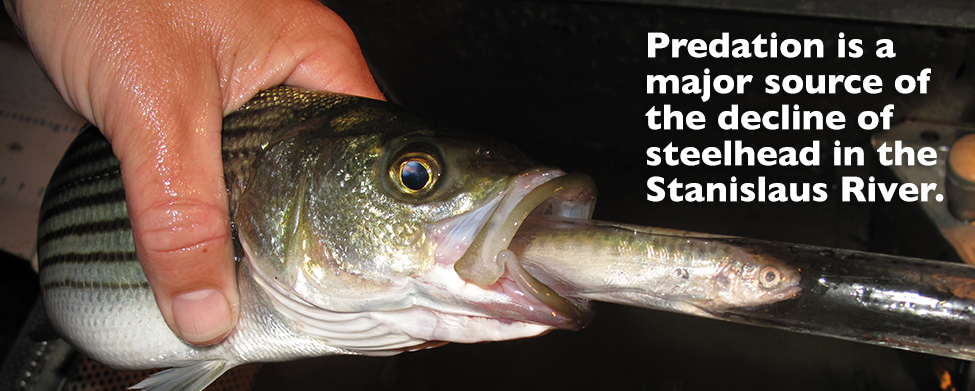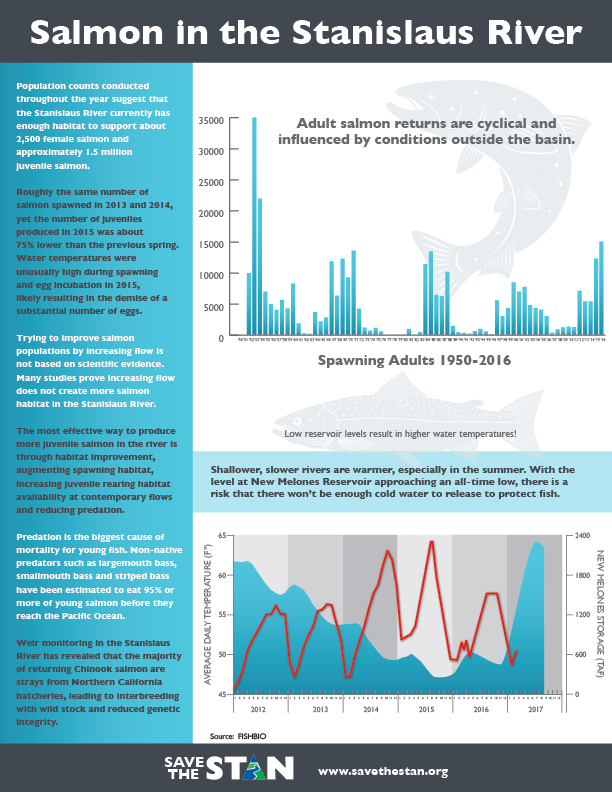Many agencies with an interest in the Stanislaus River, including the National Marine Fisheries Service and the California Department of Fish and Wildlife, agree that predation is a major source of the decline of salmon and steelhead in the Stanislaus River.
It is estimated that 800,000 to 1.5 million adult striped bass live in the Delta, with a total (all age groups) predator population of 6 million to 8 million. These and other non-native predatory fish lurk in bends and deep pools in the Stanislaus and San Joaquin rivers as well as farther to the west in the Delta and closer to San Francisco Bay. They eat baby trout and salmon at alarming rates.
Research on the Tuolumne River shows 95% to 98% of salmon and steelhead – which are protected under the federal Endangered Species Act — are lost to predation before they even leave that river (attempts to collect similar data on the Stanislaus River have been blocked by government red tape). The state estimates as few as 29 adult steelhead return each year to the Stanislaus River. In its 2009 plan, the National Marine Fisheries Service identifies predation as a “very high stressor” to steelhead recovery.
Until predation is addressed, native steelhead populations may never increase in the river, no matter how much water is released. Rep. Jeff Denham, R-Turlock, has introduced legislation H.R. 2705 that would authorize a five-year pilot program to help identify the best ways to reduce predation on young salmon and steelhead. The South San Joaquin and Oakdale irrigation districts support efforts to eliminate all predatory fish in the Stanislaus. That includes raising the limit on how many striped bass can be caught. Today, it’s two fish per day with a minimum size of 18 inches.
Meanwhile, the California Department of Fish and Wildlife announced plans in April 2015 to raise the daily limit for salmon from two to four. How does that make sense? A fish whose population has declined and government officials say they want to protect can be caught at twice the rate than the predators can be caught – the same predators that already eat most young salmon.
Stripers and other predatory fish are not the only reason for the decline in the native fish in the Stanislaus River, but they are a major factor that is unrelated to the amount of water that goes down the river. If we are truly serious about saving the native fish, something needs to be done about predation.


